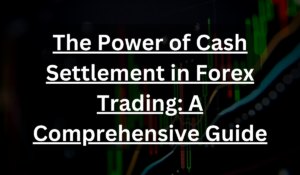Introduction
What is Swing Trading?
Swing trading involves buying low and selling high within a relatively short time frame, typically a few days to a few weeks. It focuses on capturing short-term price swings or oscillations in the market. Unlike day trading, swing trading allows traders to take advantage of market movements without constantly monitoring the market throughout the day.
Advantages of Swing Trading:
- Capturing frequent short-term price changes: Swing trading enables traders to profit from the frequent price fluctuations that occur in the market.
- Simplified analysis: Swing traders primarily rely on technical analysis, which involves studying price charts and indicators, making the trading process less complex compared to other trading strategies.
- Time efficiency: Swing trading requires less time commitment compared to day trading. Traders can manage their trades and analyze the market at their convenience.
- Profit potential: With successful swing trading strategies, traders can aim for consistent profits on each transaction, typically around 2% or more.
Key Swing Trading Strategies:
Here are some key swing trading strategies:
Exponential Moving Average (EMA)
The EMA is a popular indicator that helps identify trends and potential entry and exit points. It reacts quickly to recent price changes, making it useful for swing traders.
Fibonacci Retracement
This strategy involves using Fibonacci retracement levels to identify potential areas of support and resistance in the market. Traders can enter or exit positions based on price action near these levels.
Bollinger Bands
Bollinger Bands are used to measure market volatility. Swing traders can use Bollinger Bands to identify periods of high or low volatility and plan their trades accordingly.
Relative Strength Index (RSI)
RSI is an oscillating indicator that helps traders assess whether a stock is overbought or oversold. Swing traders can use RSI to identify potential reversal points and make informed trading decisions.
MACD Crossover
The Moving Average Convergence Divergence (MACD) is a versatile indicator that can help identify trend direction and generate buy or sell signals. Swing traders often use MACD crossovers to confirm entry and exit points.
Getting Started with Forex Swing Trading:
Here’s how you can get started with forex swing trading:
- Open a live trading account: Choose a reputable broker and open a live trading account. If you’re new to swing trading, consider practicing on a demo account first.
- Technical analysis: Utilize technical analysis tools such as chart patterns, indicators, and trend lines to identify potential swing trading opportunities.
- Research and asset selection: Conduct thorough research on different currency pairs or other assets and select the ones that align with your trading strategy and risk tolerance.
- Risk management: Implement risk management techniques such as setting stop-loss and take-profit orders to protect your capital and maintain consistency in your trading approach.
- Monitor market conditions: Stay updated on market news and events that may impact your trades. Pay attention to price movements, market trends, and any potential disruptions.
- Exit strategies: Determine your exit strategy in advance to minimize emotional decision-making. Having predefined profit targets and stop-loss levels can help you make logical trading decisions.
Conclusion:
Swing trading offers traders the opportunity to profit from short- to medium-term price swings in financial markets. By employing effective strategies such as exponential moving averages, Fibonacci retracement, Bollinger Bands, RSI, and MACD crossovers, swing traders can enhance their trading performance. Remember to conduct thorough research, practice risk management, and stay disciplined in your approach. With patience and dedication, swing trading can be a valuable addition to your trading repertoire.
Frequently Asked Questions:
What is the ideal time frame for swing trading?
Swing trading typically operates on time frames ranging from a few days to a few weeks. However, the specific time frame may vary depending on the trader’s preferences and the market being traded.
Is swing trading suitable for beginners?
Swing trading requires a basic understanding of technical analysis and risk management. While itmay not be the best strategy for absolute beginners, individuals with some trading experience can learn and implement swing trading strategies with practice and education.
How much capital is required for swing trading?
The capital required for swing trading varies depending on the trader’s risk tolerance and the size of their positions. It is recommended to start with a sufficient amount of risk capital to withstand potential losses and maintain consistency in trading.
How do I handle overnight risks in swing trading?
Swing trading involves holding positions overnight, which exposes traders to overnight market risks. Implementing stop-loss orders and closely monitoring positions can help manage and mitigate potential risks.
Can swing trading be applied to other financial markets besides forex?
Yes, swing trading strategies can be applied to various financial markets such as stocks, commodities, cryptocurrencies, and indices. The principles of swing trading remain similar across different markets, but it’s important to adapt strategies based on the unique characteristics of each market.
How do I improve my swing trading skills?
Improving swing trading skills requires a combination of education, practice, and continuous learning. Engage in comprehensive market research, study technical analysis, and analyze your past trades to identify areas for improvement. Additionally, staying updated with market news and participating in trading communities can provide valuable insights and support.
What are some common mistakes to avoid in swing trading?
Some common mistakes to avoid in swing trading include overtrading, ignoring risk management, chasing trends without proper analysis, and allowing emotions to drive trading decisions. It’s crucial to stick to a well-defined trading plan, exercise patience, and avoid impulsive actions.
Remember, mastering swing trading takes time and experience. It’s essential to approach it with a disciplined mindset, adapt strategies to changing market conditions, and continually refine your skills to achieve consistent profitability.








